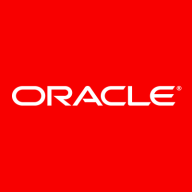

Find out in this report how the two Cloud Data Warehouse solutions compare in terms of features, pricing, service and support, easy of deployment, and ROI.


Databricks is utilized for advanced analytics, big data processing, machine learning models, ETL operations, data engineering, streaming analytics, and integrating multiple data sources.
Organizations leverage Databricks for predictive analysis, data pipelines, data science, and unifying data architectures. It is also used for consulting projects, financial reporting, and creating APIs. Industries like insurance, retail, manufacturing, and pharmaceuticals use Databricks for data management and analytics due to its user-friendly interface, built-in machine learning libraries, support for multiple programming languages, scalability, and fast processing.
What are the key features of Databricks?
What are the benefits or ROI to look for in Databricks reviews?
Databricks is implemented in insurance for risk analysis and claims processing; in retail for customer analytics and inventory management; in manufacturing for predictive maintenance and supply chain optimization; and in pharmaceuticals for drug discovery and patient data analysis. Users value its scalability, machine learning support, collaboration tools, and Delta Lake performance but seek improvements in visualization, pricing, and integration with BI tools.
Oracle Big Data Appliance is a flexible, high-performance, secure platform for running diverse workloads on Hadoop and NoSQL systems. With Oracle Big Data SQL, Oracle Big Data Appliance extends Oracle’s industry-leading implementation of SQL to Hadoop and NoSQL systems. By combining the newest technologies from the Hadoop ecosystem and powerful Oracle SQL capabilities together on a single pre-configured platform, Oracle Big Data Appliance is uniquely able to support rapid development of new Big Data applications and tight integration with existing relational data.
For more information on Oracle Big Data Appliance, visit Oracle.com
We monitor all Cloud Data Warehouse reviews to prevent fraudulent reviews and keep review quality high. We do not post reviews by company employees or direct competitors. We validate each review for authenticity via cross-reference with LinkedIn, and personal follow-up with the reviewer when necessary.